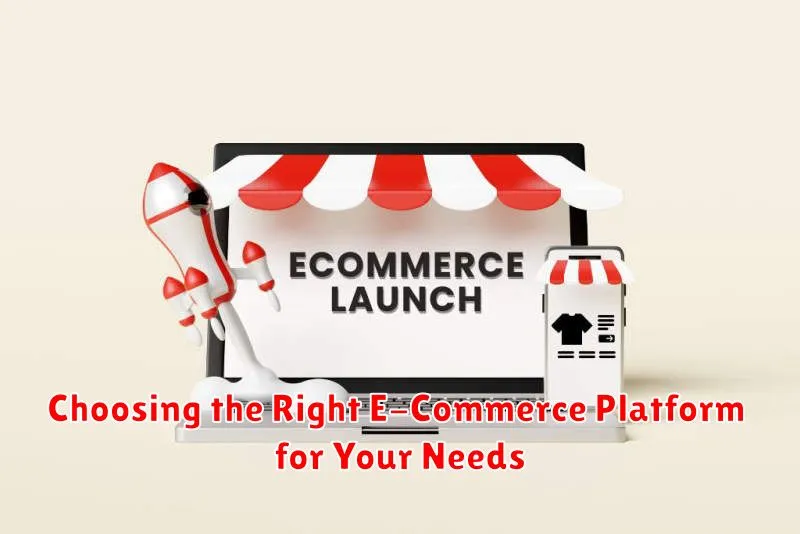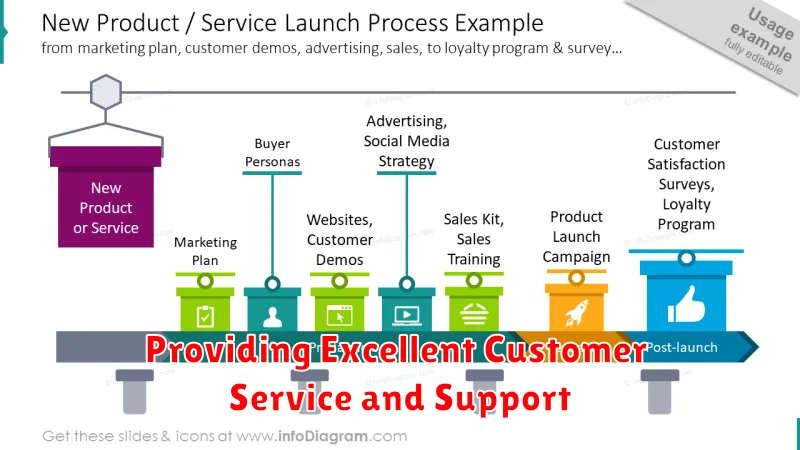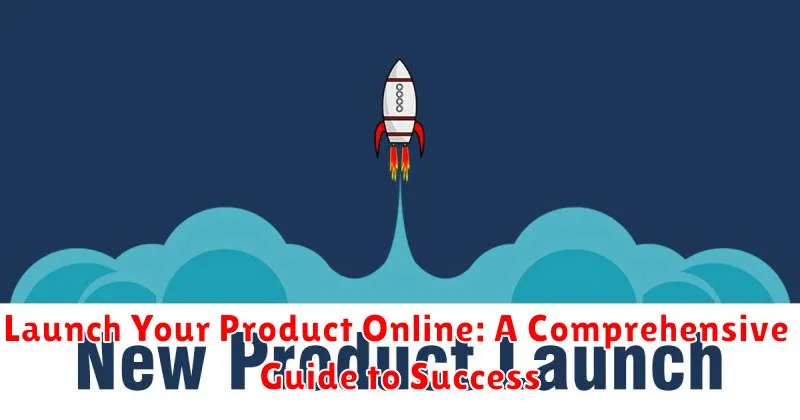Launching a new product online can feel like navigating a complex maze. From building a robust marketing strategy to understanding the nuances of e-commerce platforms, the path to a successful product launch requires careful planning and execution. This comprehensive guide provides a step-by-step approach to help you confidently navigate the digital landscape and launch your product online with maximum impact. We’ll cover everything from initial market research and product development to post-launch analysis, ensuring you have the tools and knowledge to achieve your business objectives and establish a thriving online presence.
Whether you’re an established business expanding your product line or a budding entrepreneur introducing your first offering to the world, this guide is designed to be your essential resource. Learn how to effectively target your ideal customer, leverage the power of social media marketing, and optimize your online sales channels for conversions. By understanding the key elements of a successful online product launch, you can transform your vision into a reality and build a sustainable brand in today’s competitive digital market. This guide will equip you with the knowledge and strategies needed to not just launch your product but to launch it successfully.
Defining Your Target Audience and Niche
Before launching your product, it’s crucial to identify your target audience and carve out your specific niche. Understanding your ideal customer is the foundation of a successful product launch.
Defining your target audience involves creating a detailed profile of your ideal customer. Consider demographics such as age, gender, location, income level, and education. Beyond demographics, explore their psychographics: their values, interests, lifestyle, and pain points.
Your niche is the specific area of the market your product caters to. It’s where your product uniquely meets the needs of a particular segment of your target audience. A clearly defined niche helps you differentiate yourself from competitors and focus your marketing efforts.
Research is key to understanding both your target audience and niche. Analyze market trends, competitor offerings, and customer reviews to pinpoint opportunities and unmet needs. Tools like surveys and focus groups can provide valuable insights directly from potential customers.
Crafting a Compelling Product Story
A compelling product story goes beyond simply listing features. It connects with your audience on an emotional level, explaining why your product exists and the problem it solves.
Focus on the transformation. Don’t just describe what your product is; highlight what it does for the customer. How does it improve their lives? What pain points does it address? What benefits does it offer?
Be authentic and transparent. Share the inspiration behind your product. Was it born out of a personal need? A desire to improve an existing solution? This genuine approach builds trust and resonates with customers.
Keep it concise and engaging. Use clear, concise language and avoid technical jargon. Your story should be easily understood and memorable. Consider using storytelling techniques like incorporating a problem, solution, and outcome.
Building a Pre-Launch Buzz and Generating Excitement
Generating pre-launch buzz is crucial for a successful product launch. It builds anticipation and primes your target audience for purchase. A well-executed pre-launch campaign can significantly impact your initial sales and establish early brand recognition.
Leverage social media to create excitement. Run contests, offer sneak peeks, and engage with potential customers. Tease product features and benefits to pique interest. Influencer marketing can be a powerful tool. Partnering with relevant influencers can introduce your product to a wider audience and build credibility.
Early bird discounts and exclusive offers incentivize early adoption and create a sense of urgency. Consider offering limited-edition versions or bundles for pre-orders. Collecting email sign-ups before launch allows you to directly communicate with interested customers and notify them as soon as your product becomes available.
Choosing the Right E-Commerce Platform for Your Needs

Selecting the right e-commerce platform is a critical step in launching your product online. The platform you choose will significantly impact your business operations, scalability, and ultimately, your success. Consider your specific needs and resources when evaluating different platforms.
Key factors to consider include:
- Budget: Platforms range from free, open-source options to enterprise-level solutions with substantial monthly fees. Factor in transaction fees, hosting costs, and any add-on app expenses.
- Technical Expertise: Some platforms require coding knowledge, while others offer user-friendly drag-and-drop interfaces. Choose a platform that aligns with your technical capabilities.
- Scalability: As your business grows, your platform should be able to handle increased traffic and sales volume. Consider future growth potential when making your decision.
- Customization Options: The ability to customize the look and feel of your online store is essential for branding and creating a unique customer experience. Evaluate the platform’s theming and customization capabilities.
- Features and Integrations: Different platforms offer various built-in features and integrations with third-party tools. Consider which features are essential for your business, such as inventory management, marketing automation, and shipping integrations.
Researching and comparing different e-commerce platforms will help you make an informed decision and set your online business up for success.
Creating High-Quality Product Listings that Convert
Compelling product listings are crucial for driving sales. They inform and persuade potential customers, ultimately leading to conversions. A well-crafted listing goes beyond simply describing the product; it highlights its value proposition and answers key customer questions.
Begin with high-quality product photography that showcases your product from multiple angles. Images should be clear, well-lit, and accurately represent the item’s appearance. Consider lifestyle shots to demonstrate how the product is used.
Your product title should be concise and informative, including relevant keywords for search optimization. Follow this with a detailed and engaging product description that highlights key features and benefits. Address potential customer pain points and explain how your product provides a solution.
Use bullet points to summarize key features and specifications, making it easy for customers to quickly scan information. Clearly display pricing and any available options, such as size or color variations. Encourage customer reviews to build trust and social proof.
Developing a Robust Marketing and Sales Strategy
A well-defined marketing and sales strategy is crucial for a successful online product launch. This involves understanding your target audience, their needs, and how your product addresses those needs.
Market Research: Begin by thoroughly researching your target market. Identify their demographics, online behavior, and preferred platforms. This information will inform your marketing efforts and ensure you reach the right audience.
Channel Selection: Choose the appropriate marketing channels to reach your target audience. This could include social media marketing, email marketing, search engine optimization (SEO), or paid advertising. Focus on the platforms where your audience is most active.
Content Strategy: Create compelling content that showcases the value of your product. This could include blog posts, videos, infographics, or social media updates. High-quality content builds trust and attracts potential customers.
Sales Funnel: Develop a sales funnel that guides potential customers through the buying process. This involves attracting leads, nurturing their interest, and converting them into paying customers. Clearly define the steps in your sales process.
Analytics and Optimization: Track your marketing and sales efforts using analytics tools. Monitor key metrics like website traffic, conversion rates, and customer acquisition cost. Use this data to optimize your strategy and improve your results over time.
Pricing Your Product Competitively for Profit
Setting the right price is crucial for your product’s success. Competitive pricing attracts customers while ensuring profitability. A well-defined pricing strategy considers several factors.
Cost of Goods Sold (COGS): Accurately calculate all costs associated with production, including materials, labor, and overhead. This forms your pricing floor.
Market Research: Analyze your competitors’ pricing strategies. Understand the value proposition they offer and how it influences their pricing. This informs your competitive positioning.
Target Profit Margin: Determine your desired profit margin. Factor this into your pricing calculations to ensure your business remains sustainable and grows.
Pricing Strategies: Consider different pricing models such as value-based pricing, cost-plus pricing, or competitive pricing. Choose the model that aligns best with your product and target market.
Managing Inventory and Fulfillment Efficiently
Efficient inventory management and order fulfillment are crucial for a successful online business. Properly managing your stock levels prevents stockouts and minimizes storage costs. An organized system helps you track products, anticipate demand, and ensure timely delivery.
Choose an inventory management system that suits your business needs. Consider factors like scalability, integration with your e-commerce platform, and reporting features. Accurately tracking your inventory levels in real-time allows you to make informed decisions about reordering and prevents lost sales due to stockouts.
Decide on a fulfillment method. Will you handle fulfillment in-house (self-fulfillment) or outsource to a third-party logistics provider (3PL)? Self-fulfillment gives you greater control but requires more resources. A 3PL handles storage, packing, and shipping, freeing up your time to focus on other aspects of your business.
Streamline your shipping process. Establish clear procedures for picking, packing, and shipping orders. Offer various shipping options to customers and provide tracking information. Efficient shipping contributes to customer satisfaction and builds trust.
Providing Excellent Customer Service and Support

Customer service is paramount to the success of any online business. A positive customer experience fosters loyalty and encourages repeat purchases. It also generates positive word-of-mouth marketing, which can be invaluable.
Establish clear communication channels. Offer support through various avenues, such as email, phone, and live chat. Ensure these channels are staffed by knowledgeable and empathetic representatives.
Develop a comprehensive FAQ section. Addressing common questions proactively saves customers time and reduces the burden on your support team. Organize this section logically and make it easily searchable.
Implement a robust returns and refund policy. A clear and customer-friendly policy builds trust and reduces anxiety associated with online purchases. Be sure to clearly outline the process and timeframe for returns.
Actively solicit feedback. Encourage customers to share their experiences, both positive and negative. This valuable information can help you identify areas for improvement and refine your customer service strategies.

